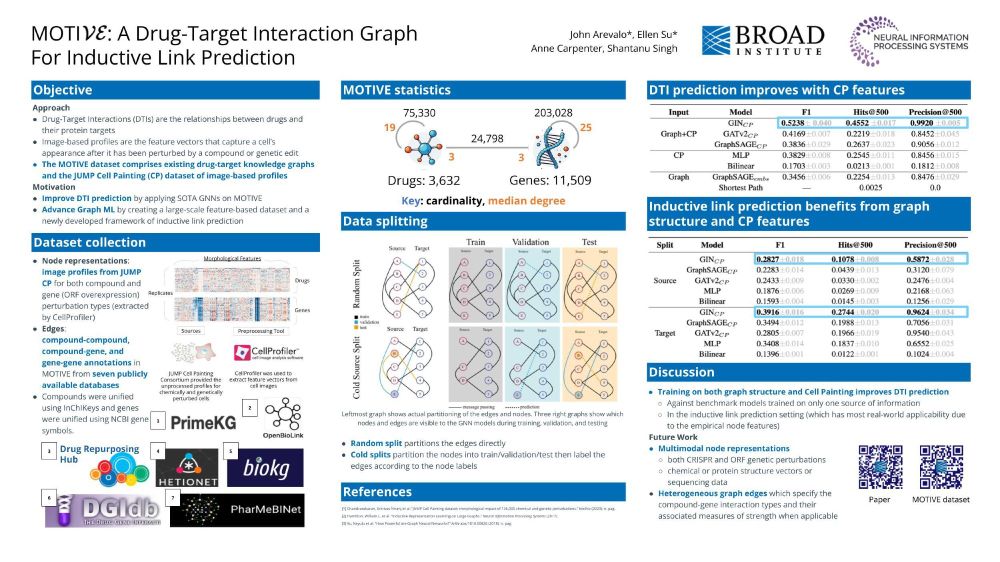John Arevalo
@johnarevalo.bsky.social
64 followers
16 following
1 posts
MLxBio @ Broad Institute | Former ML Engineer AI Fund, Colombia 🇨🇴
Posts
Media
Videos
Starter Packs
![(a) Human U2OS cells treated with dimethyl sulfoxide (DMSO) and stained using the Cell Painting assay, which employs six dyes in five channels to label eight cellular compartments. The top row (from left to right) shows mitochondrial staining; actin, Golgi, and plasma membrane staining; and nucleolar and cytoplasmic RNA staining. The bottom row (from left to right) displays endoplasmic reticulum staining, DNA staining, and a montage of all five channels (from Cimini et al. [21]). (b) Thousands of features are extracted from each segmented cell in microscopy images of wells. A learned function f(x) (CytoSummaryNet) aggregates this data into a single feature vector: the sample’s profile. (c) An in-depth look at the model architecture used in this study. The model consists of three elements: a function φ(x), which maps the input data from ℝD to ℝL space, a summation, which collapses the cell dimension, and ρ(z), which maps the collapsed representation from ℝN to ℝL space. (d) During training, replicate compound profiles are forced to attract each other (green arrows) and simultaneously repel every other compound (red arrows) in the learned feature space. Here, all forces are drawn for a single profile of compound B.](https://cdn.bsky.app/img/feed_thumbnail/plain/did:plc:raswr6mjt7sbppdo6kcce4mz/bafkreicppuq2utmxkx5kpaggndigq7qcat6ppdqqajxhphpyi53ydlbbeq@jpeg)
